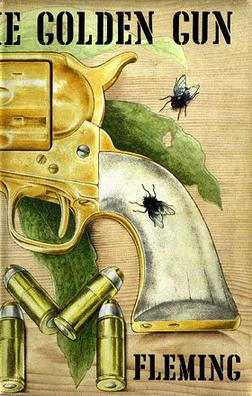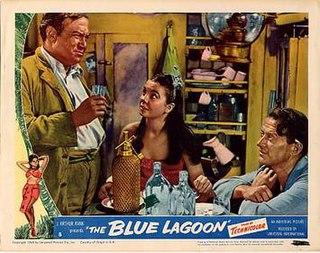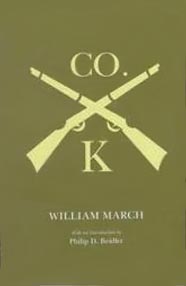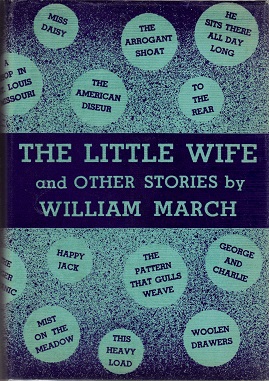Patrick O'Brian, born Richard Patrick Russ, was an English novelist and translator, best known for his Aubrey–Maturin series of sea novels set in the Royal Navy during the Napoleonic Wars, and centred on the friendship of the English naval captain Jack Aubrey and the Irish–Catalan physician Stephen Maturin. The 20-novel series, the first of which is Master and Commander, is known for its well-researched and highly detailed portrayal of early 19th-century life, as well as its authentic and evocative language. A partially finished 21st novel in the series was published posthumously containing facing pages of handwriting and typescript.

The Man with the Golden Gun is the twelfth and final novel in Ian Fleming's James Bond series and thirteenth Bond book overall. It was first published by Jonathan Cape in the UK on 1 April 1965, eight months after the author's death. The novel was not as detailed or polished as the others in the series, leading to poor but polite reviews. Despite that, the book was a best-seller.

Andrew Norman Wilson is an English writer and newspaper columnist known for his critical biographies, novels and works of popular history. He is an occasional columnist for the Daily Mail and a former columnist for the London Evening Standard. He has been an occasional contributor to The Times Literary Supplement, New Statesman, The Spectator and The Observer.

The Blue Lagoon is a 1949 British coming-of-age romance and adventure film directed and co-produced by Frank Launder and starring Jean Simmons and Donald Houston. The screenplay was adapted by John Baines, Michael Hogan, and Frank Launder from the 1908 novel The Blue Lagoon by Henry De Vere Stacpoole. The original music score was composed by Clifton Parker and the cinematography was by Geoffrey Unsworth.

William March was an American writer of psychological fiction and a highly decorated U.S. Marine. The author of six novels and four short-story collections, March was praised by critics but never attained great popularity.

Company K is a 1933 novel by William March, first serialised in parts in the New York magazine The Forum from 1930 to 1932, and published in its entirety by Smith and Haas on 19 January 1933, in New York. The book's title was taken from the Marine company that March served in during World War I. It has been regarded as one of the most significant works of literature to come out of the American World War I experience, and it is the most reprinted of all March's work.

The Little Wife and Other Stories is a 1935 collection of short stories by William March. Many of the stories were first published in magazines. The title story is set in March's Reedyville, an imaginary town in Alabama.

Trial Balance: The Collected Short Stories of William March is a collection of short stories by American author William March, first published in 1945 by Harcourt, Brace and Company. The 55 stories span almost the entirety of March's entire career until then, from 1929 to 1945.
Roy S. Simmonds was an English literary scholar and critic best known for his biographies of John Steinbeck, William March and Edward O'Brien.

Rhubarb is a 1951 film adapted from the 1946 novel Rhubarb by humorist H. Allen Smith. Directed by Arthur Lubin, the screwball noir comedy stars the cat Orangey along with Jan Sterling and Ray Milland. Cinematography was by Lionel Lindon. The supporting cast features William Frawley and Gene Lockhart.
John Horne Burns was an American writer, the author of three novels. The first, The Gallery (1947), is his best known work, was very well received when published, and has been reissued several times.

Donald Barr was an American educator, writer, and Office of Strategic Services (OSS) officer. He was an administrator at Columbia University before serving as headmaster at the Dalton School in New York City and the Hackley School in Tarrytown, New York. He also wrote two science fiction novels. His sons are former United States Attorney General William Barr and physicist Stephen Barr.

99 Fables is a book of fables by American author William March. The collection was first written around 1938 but was never published as a whole. More than 40 had been published in journals and magazines such as Prairie Schooner, Kansas Magazine, Rocky Mountain Review, and New York Post. Not long before his death in 1954, March returned to the collection and edited it, leaving 99 fables in all. March's manuscripts of the fables were further edited in 1959 by William T. Going, and published in 1960 by the University of Alabama Press, with illustrations by Richard Brough. The cover won an award at the 1960 Southern Books Competition.

Lydia Bailey is a 1952 American historical adventure film directed by Jean Negulesco and starring Dale Robertson, Anne Francis and Charles Korvin. It was made by 20th Century Fox and based on the 1947 novel of the same name by Kenneth Roberts.
William Collins, Sons & Co., often referred to as Collins, was a Scottish printing and publishing company founded by a Presbyterian schoolmaster, William Collins, in Glasgow in 1819, in partnership with Charles Chalmers, the younger brother of Thomas Chalmers, the minister of Tron Church in Glasgow.

Come in at the Door is the first book in Alabama author William March’s “Pearl County” collection of novels and short fiction. It is an example of the Southern Gothic genre. Following the success of March's first novel, Company K, about World War I, the author began to explore his own childhood in south Alabama in his fiction. Come in at the Door is set in the three towns of Hodgetown, Reedyville, and Baycity, the latter offering a fictionalized vision of Mobile, Alabama. The book was first published in 1934 by Smith & Haas in New York and republished by the University of Alabama Press in 2015. The other novels in the series are The Tallons and The Looking-Glass.

The Tallons is the second novel in Alabama author William March’s “Pearl County” collection of novels and short fiction. It is an example of the Southern Gothic genre. Like its predecessor, Come in at the Door and sequel, The Looking-Glass, The Tallons is set in the mythical towns of Reedyville and Baycity, the latter offering a fictionalized vision of Mobile, Alabama. The book was first published in 1936 by Random House in New York and republished by the University of Alabama Press in 2015.
Charles Stanley Strong was an American writer, adventurer and explorer.
Donald Barr Chidsey was an American writer, biographer, historian, novelist and writer of adventure fiction.
Patricia Abercrombie Barnes, better known by the pen name P. B. Abercrombie, was a British writer.













